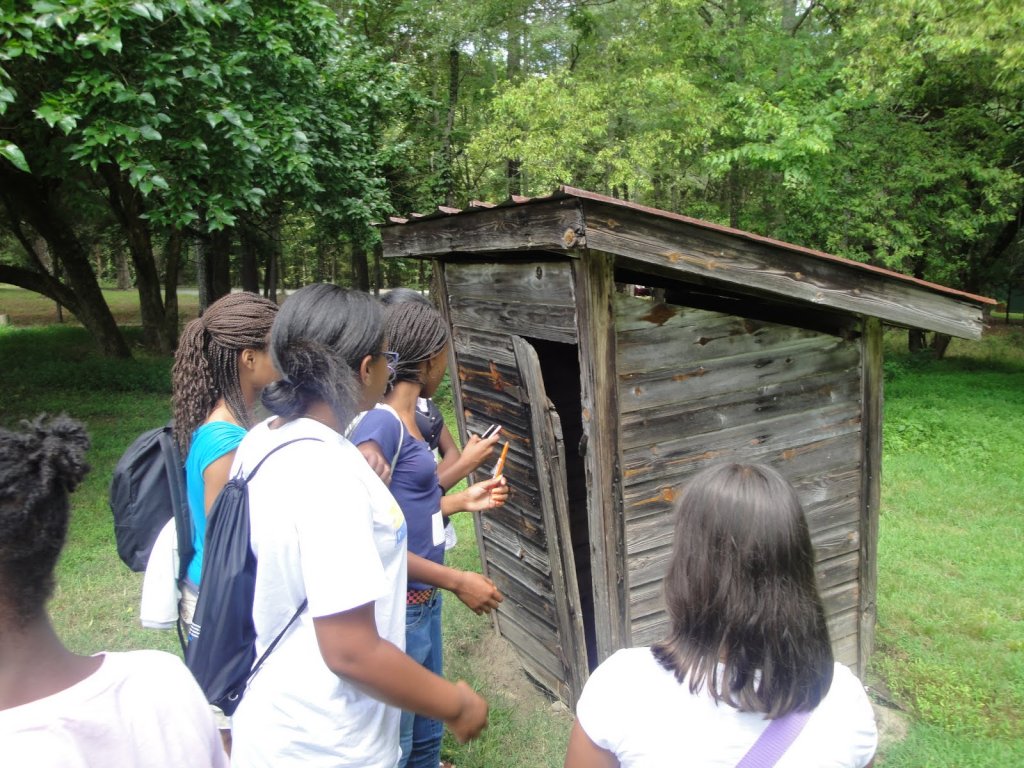Our Monthly Lecture Series (Karin Shapiro and Fred Boadu, Co-Chairs) and an Annual Scholarly Conference were free and open to the public.
November 2012 - Global Affirmative conference
The fall 2012 Global Affirmative conference will examine affirmative action and its counterparts around the world. This conference will be the first of a historic Memorandum of Understanding between the Center and the University of Malaya. Scholars from the US , Malaysia, Ecuador, Colombia, and Fiji--among other key settings of affirmative action--will address the diverse experiences and effects of these policies. (Michaeline Crichlow, Chair).
Conference October 2011
Human Traffic: Past & Present
The Center for African and African American Research, along with co-sponsors, the Franklin Humanities Institute, the Kenan Institute of Ethics, and the Department of African and African American Studies, will host a Fall 2011 conference on Human Trafficking at the Smith Warehouse, October 13-15th.
This conference will bring together scholars and activists working in this area. It is our hope that this conference will excite new thinking on the ethical and political delemmas of human trafficking in all its historical variations and contexts. The conference will address questions regarding the ways in which human trafficking is related to a liberal political economy and the extent to which it implicates broader struggles and forces immanent in fields of globalization, development and migration. In particular, we wish to place serious attention on the bodily politics of trafficking and its links to strategies of domination and resistance, law and disorder, and practices of flight and shelter. We are further interested in probing more deeply the connections between human trafficking and contemporary global politics of race and place and in addressing trafficking as a phenomenon multiply ordered by a variety of economic and social fields, vistas, or dreamscapes of slavery and "freedom."
We hope to develop fresh perspectives using four broad themes: a consideration of trafficking within contemporary and historical regimes of governance and development; the markets, labor, and brokers of trafficking; media representations of human traffic; and the place of trafficking within questions of citizenship and law. The conference will begin with a keynote address and reception on the evening of Thursday, October 13 and will then be followed by panels on each of these four themes on Friday and Saturday. In addition to the panels, the conference will host an exhibition by the well known Vancouver based Caribbean artist Charles Campbell whose installation will be on display before, during and after the conference at the Frederick Jameson Gallery in the Friedl Building on East campus.
At the end of the conference CAAAR and its co-sponsors hope to present a public statement on human trafficking urging particular kinds of actions and recommendations to NGOs and governments and a publication of edited versions of the conference talks for scholars
April 29-30 2011
Youthful Futures: Africa & the Caribbean
Hosted by CAAAR
Seven out of ten Africans south of the Sahara are under thirty, and four of them are under the age of fifteen. On April 29-30, at the Center for African and African American Research, anthropologists, sociologists, and demographers joined journalists, diplomats, and NGO directors to debated the broad cultural, political and economic implications of youth demographics, highlighting the comparative lessons of Africa and the Caribbean, a historically related but fast-greying region of the world. The conference--organized by journalist Stephen Smith (committee chair), anthropologist Charles Piot, and sociologist Michaeline Crichlow--also highlighted the dilemmas and dividends of the board.
The Hypothesis
Concretely, we explored the relationship between demography and social change. Demographer Richard Cincotta argued that the age distribution of a national population might help us to predict the likelihood of rapid economic growth and crisis, political stability, and the success of liberal democracy in that country. He showed that sub-Saharan Africa's age distribution is now more heavily weighted toward youth than any other region of the world and that this age distribution helps us to predict Africa's political and economic trajectory. He also stated that culture and state policy might not be the most efficient predictors of future patterns of social change.
Two-day conference March 25-26 2010
Can we talk? Bridges between the Humanities and the Social Sciences
In the center's first conference, Can We Talk? Bridges between the Humanities and the Social Sciences. The conference elisted contributions of virtually the entire AAAS faculty, our visiting scholars, graduate students and our undergraduates.
No one could have built these interdisciplinary bridges other better than William, "Sandy" Darity ---a leading advocate and teacher of mixed methods.
At the gathering, 43 speakers --representing virtually all disciplines in the humanities, the interpretive social sciences, and the quantitative social sciences, as as journalist and a filmmaker--demonstrated their diverse experiments in interdisciplinary research, analysis and teaching and, on the spot, collectively talked out a range of new interdisciplinary options.
Short description here...




